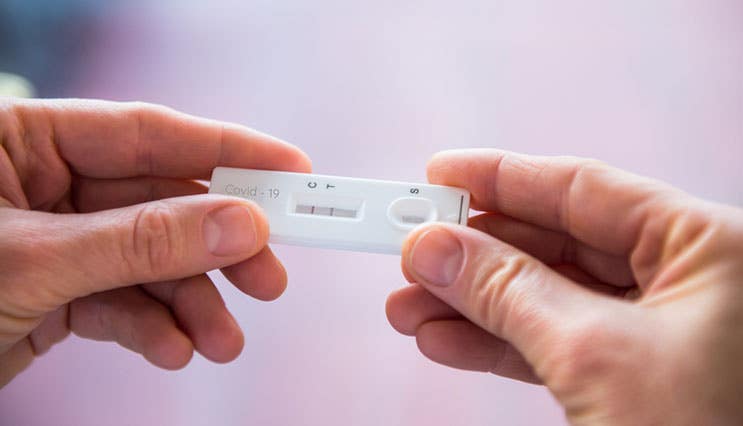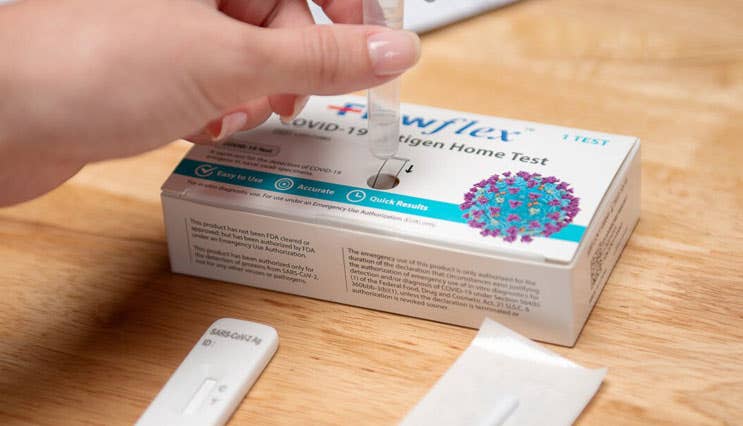COVID rapid tests are now readily accessible as people can access them from the comfort of their homes through the government, ordering them on the government website and testing on-demand. However, with the ability to test from home, it’s important now more than ever to understand how to ensure precise results. The potential for false positives and negatives exist, particularly when the test isn’t properly applied or instructions aren’t followed to a tee. False negatives should always be taken with some grain of salt, especially if you have been in contact with someone who has the virus.
Two terms typically get used when assessing the precision of COVID rapid tests: specificity and sensitivity. By analyzing specificity and sensitivity, it’s easier to understand why positive tests should be taken more seriously, and caution should still be exercised when receiving a negative test result.

Explaining Specificity and How It Impacts Rapid Testing
Specificity is a vital trait for COVID rapid tests, considering how it helps to improve test accuracy while impacting turnaround time and reducing transmission. Specificity is the ability to properly identify patients that don’t have coronavirus and be as specific as possible when correctly identifying a patient as negative. According to studies done by the Centers for Disease Control and Prevention (CDC), the number of false positives generated during COVID rapid testing is minimal at best, though there is still a chance of them happening. High specificity means that the chances of generating false positives are very low.
Calculating specificity depends on the false-positive results that a test will produce and finding out the false positive rate. To determine the false positive rate, you need to calculate the number of people who have generated false positives and put it as the numerator. Then, you need to calculate the number of people who do not have COVID-19, including false positives and true negatives. This means you’re dividing the false positives by the total sum of false positives and true negatives.
Once the false positive rate has been determined, you can determine the specificity. The specificity is a percentage that comes from the false positive rate. You subtract the rate from 1, then multiply that figure by 100. This means that if a rapid test had a false positive rate of 1 out of 10, or 10%, the specificity for the rapid test would be 90%. A COVID rapid test that has a false positive rate of basically zero has a specificity of 100%, meaning you can fully trust a negative test result when it is generated.
Sensitivity Identifies the Potential for False Negatives
By contrast, sensitivity is used to identify false negatives, measuring how often a test correctly generates a positive result when the person tested has COVID-19. The lower the sensitivity, the more likely a COVID rapid test will general a false-positive result.
A negative result on a COVID rapid test is significantly less informative than a positive result. The risk of getting a false negative with a COVID test is relatively high, with the chances of generating a false negative result being higher for asymptomatic people. According to a review of studies conducted in the spring of 2021, the accuracy for people who had COVID-19 symptoms was nearly 15% higher, with better confidence intervals as well. Low sensitivity on rapid COVID tests can lead to sick people being misdiagnosed as healthy. A false negative result suggests you have the antibodies to combat the virus or that you don’t have the virus at all when you do.
To calculate the sensitivity of a COVID-19 rapid test, you need to know the false-negative rate, also known as the miss rate. Like the false positive rate, the false-negative rate is a fraction. The top number of the fraction is the total number of false negatives, which is divided by the bottom number, the number of positive people. If you have tested 2,000 people and your rapid test shows that 400 of those people tested negative, your false negative rate is 20%. From there, you calculate the sensitivity, which is the subtraction of the false-negative rate from one. As a result, the sensitivity rate for the test would be 80%, meaning you can only trust a negative test result 80% of the time.

Why Specificity and Sensitivity Should Mean to You
Though rapid COVID tests have decreased sensitivity compared to more comprehensive tests like PCR tests or NAATs, the CDC insists that these tests can be used to monitor infection whenever someone has been in close contact with someone who has COVID symptoms. Also, studies show that rapid COVID tests have sensitivity on par with NAATs whenever the viral load in a collected specimen is high, meaning the person is highly contagious. The sensitivity of rapid COVID tests approved by the FDA varies, with negative results being handled differently depending on the circumstances.
Regarding specificity, rapid COVID tests have similarly high specificity to NAATs, meaning that false-positive test results are unlikely as long as the tests are used according to the test manufacturer’s instructions. However, it should be emphasized that false-positive results are possible, particularly in communities with low infection rates.
Now that you understand specificity and sensitivity regarding COVID tests, you will be able to develop greater diligence and confidence in your test results when using a rapid test. iPromo only carries FDA EUA approved Point-Of Care and At-Home COVID-19 test kits in bulk to support your organization’s testing programs with confidence. And as always, we are here to help with any questions, we’re happy to find the best kit for your testing needs.

